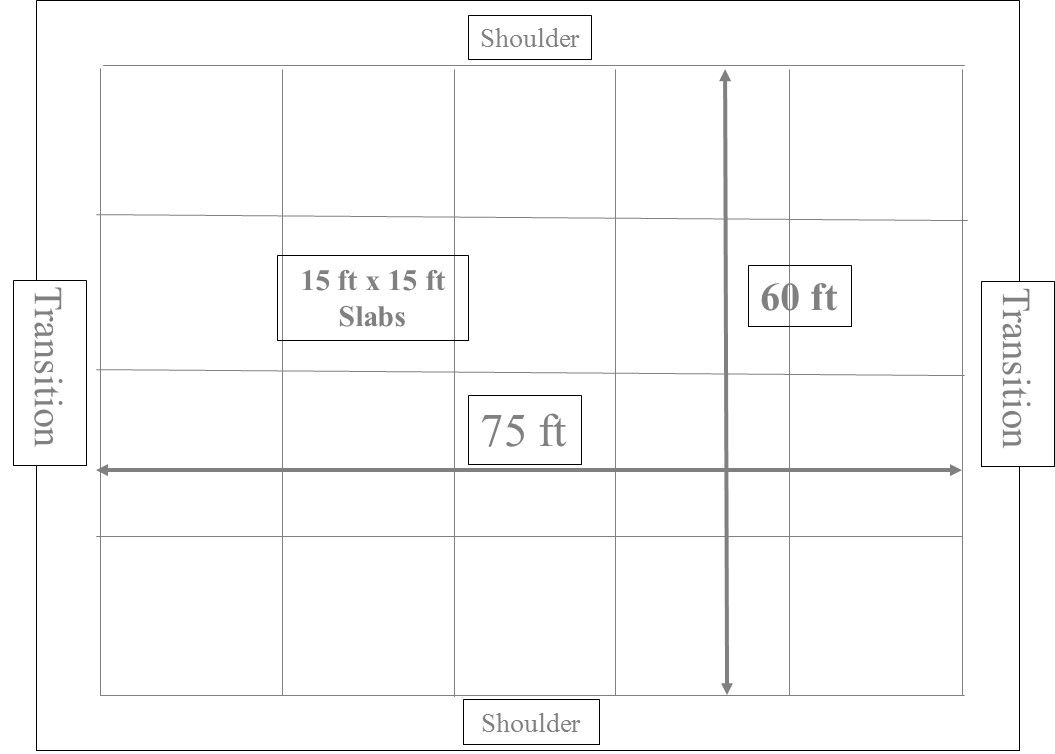CC2 Single Slab Pavement Construction/Cross Section
The single slab was placed on June 2, 2003. The slab was approximately the same size as those to be used in the test items, 15 ft. by 15 ft. (4.6 m by 4.6 m) by 11 inches (28 cm) thick as shown in Figure 1. The cementitious mix contained 60% class “C” flyash. Ultimately the slabs in the CC-2 test items were 12 inches (30.5 cm) thick and had 50% flyash in the cementitious mix. These values were selected in the final design of the test items in order to provide a thicker curl resistant slab and yet hold the traffic test passes-to-failure down to a target of about 20,000.

Figure 1. CC2 Single Slab Design
The experimental single slab was placed on an existing 20 ft. by 20 ft. (6 m by 6 m) by 9 ¾ inches (25 cm) thick concrete slab which had been previously placed on a stabilized base above the high strength subgrade as part of the original CC-1. Strips of construction paper were placed on the surface of the existing slab to act as a bond breaker between the new single slab and the existing slab.
The slab was wet cured for 28 days using burlap strips, timed soaker hoses, and plastic sheet coverings. All coverings were then removed, and the slab was allowed to dry for 113 days. After this period, the burlap strips, soaker hoses, and plastic coverings were reapplied. The slab was kept continually wet for the next 59 days, after which the data retrieval was discontinued. These alternate wet and dry periods allowed for the acquisition of data relative to characterization of the curling.
The sides of the slab were coated with a sealer after the initial 28 day wet curing period. This action provided a simulation of the condition whereby the slab would be drying while being embedded among other slabs as it would have been in an actual test item. Otherwise, the slab was totally free to curl. There were no constraints at the boundaries, thus offering the ideal condition for the curling study. In contrast, the slabs in the CC-2 test items were connected at the edges with the adjacent slabs using steel dowels. Greater structural integrity was achieved in the test items as it would be in many field applications.
The test slab was covered with burlap and plastic film and subjected to a watering cycle during the first month. The completely wet curing method kept the slab almost flat within that period. However, after watering was stopped, and the burlap and plastic removed, the slab dried gradually.